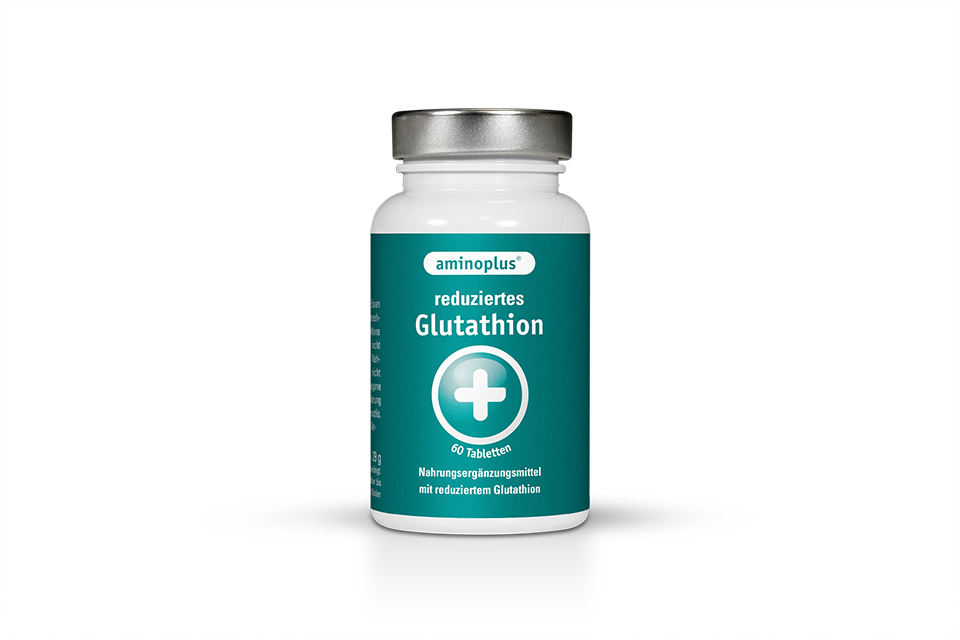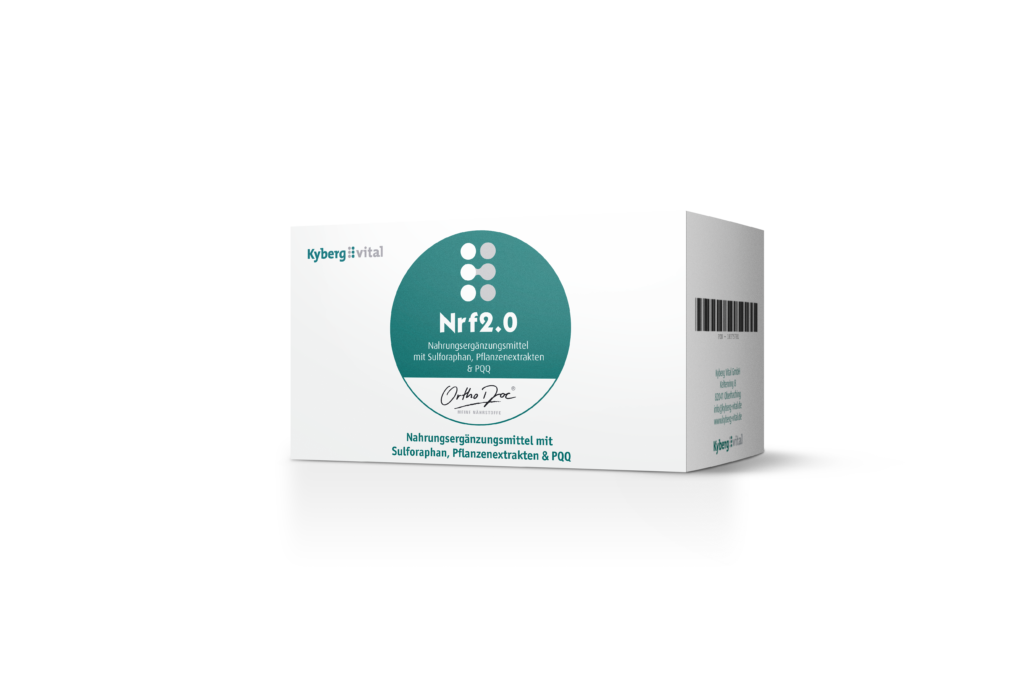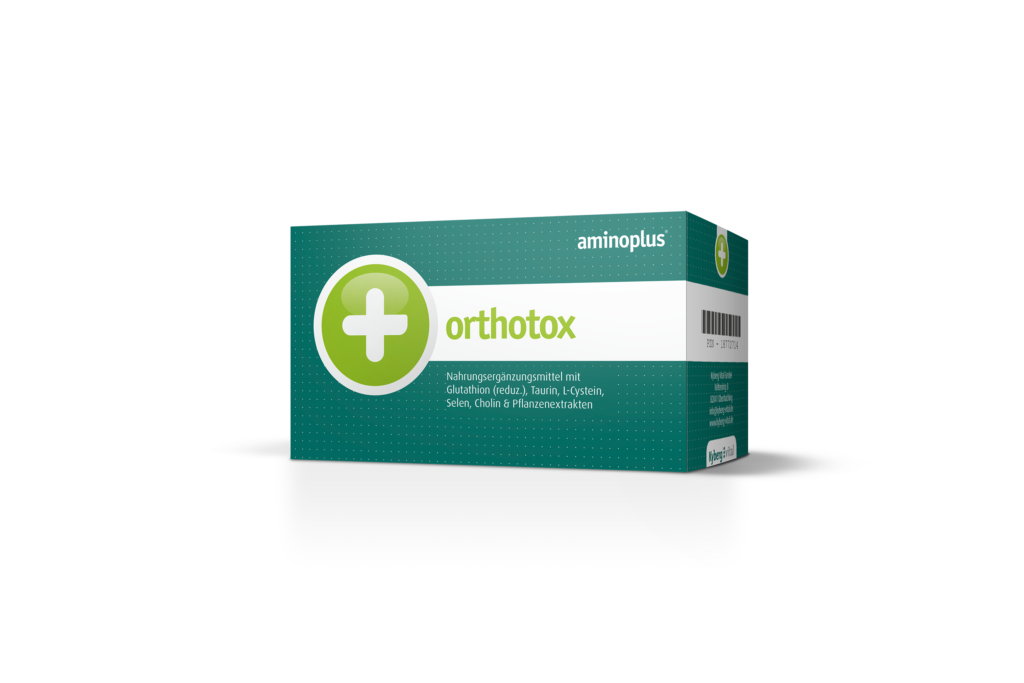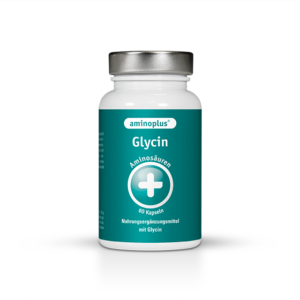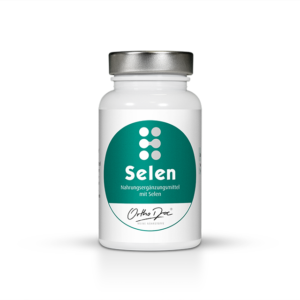NEWSLETTER
Underestimated organ: liver
The important metabolic center
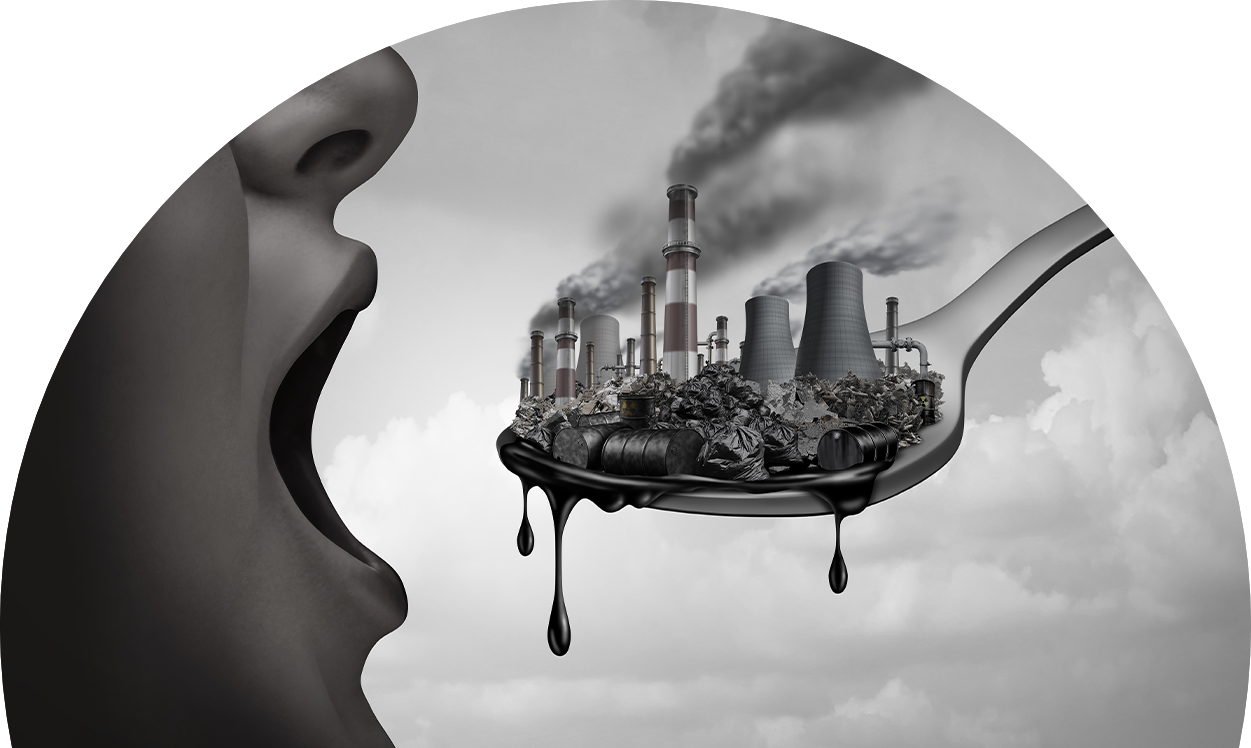
Focus on liver health
The impressive liver
Our liver is the center of our metabolism: Every minute, around 1.5 liters of blood flow through this organ, which weighs around 1.5 kg. The liver’s tasks are many and varied:
- Build-up, breakdown and conversion of lipids, proteins and carbohydrates
- Storage of glycogen and fat (= energy source)
- Detoxification of xenobiotics
- Synthesis of protein and coagulation factors.
The liver needs a broad supply of various amino acids and antioxidants every day so that it can perform all these tasks. In addition, stress levels should be kept as low as possible.
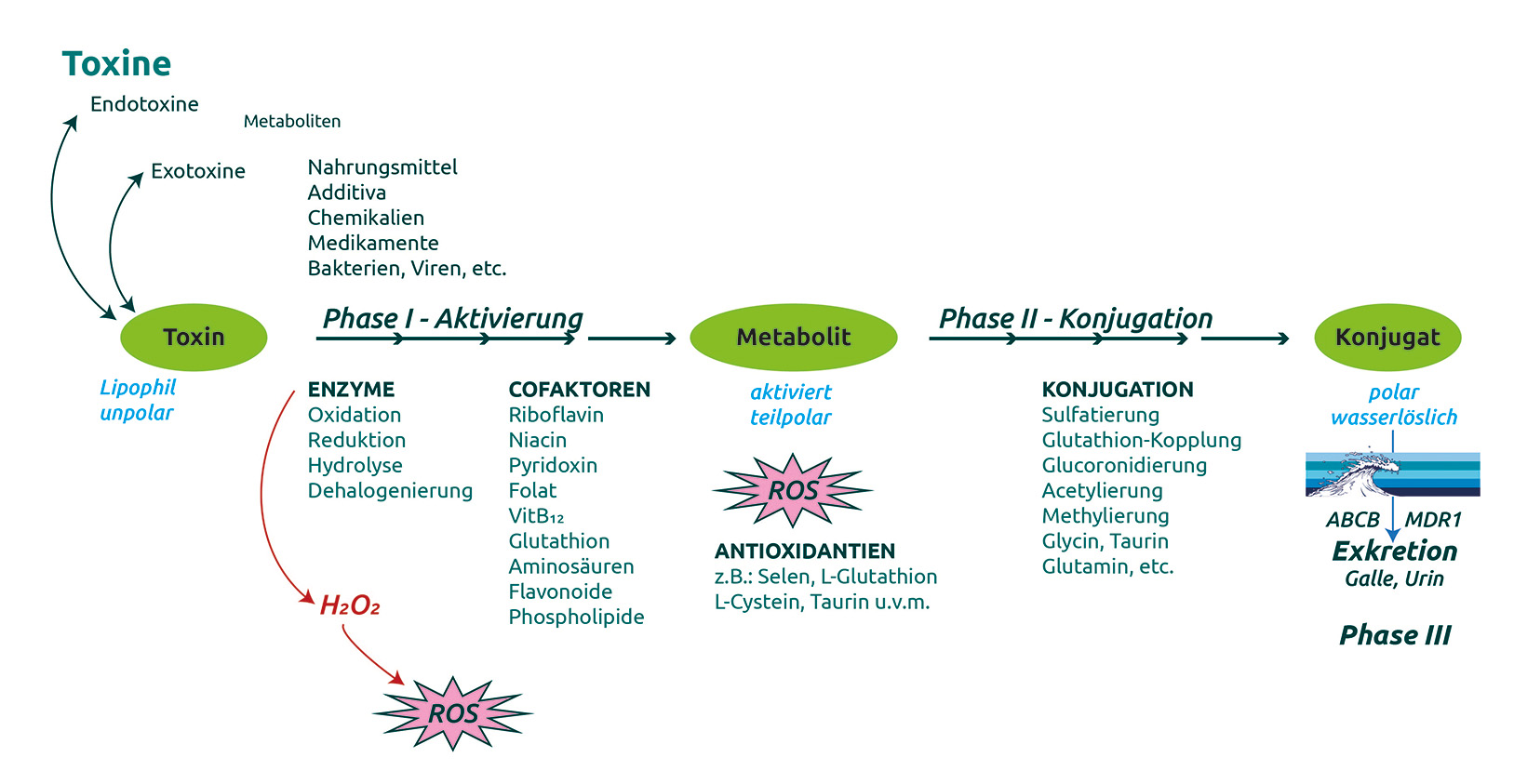
It always becomes critical when oxidative stress and free radicals cannot be adequately intercepted by antioxidants. However, people with a genetically limited detoxification capacity also benefit from avoiding the corresponding stresses and ensuring an optimal supply: Due to so-called polymorphisms, individual enzyme activities can be accelerated or restricted, for example. As a result, those affected sometimes react particularly sensitively to toxins or drugs (undesirable side effects), or there are no effects at all. It is particularly treacherous when phase I metabolization is normal or even accelerated, but the phase II reaction is restricted and slower. In these cases, radical intermediates can accumulate.
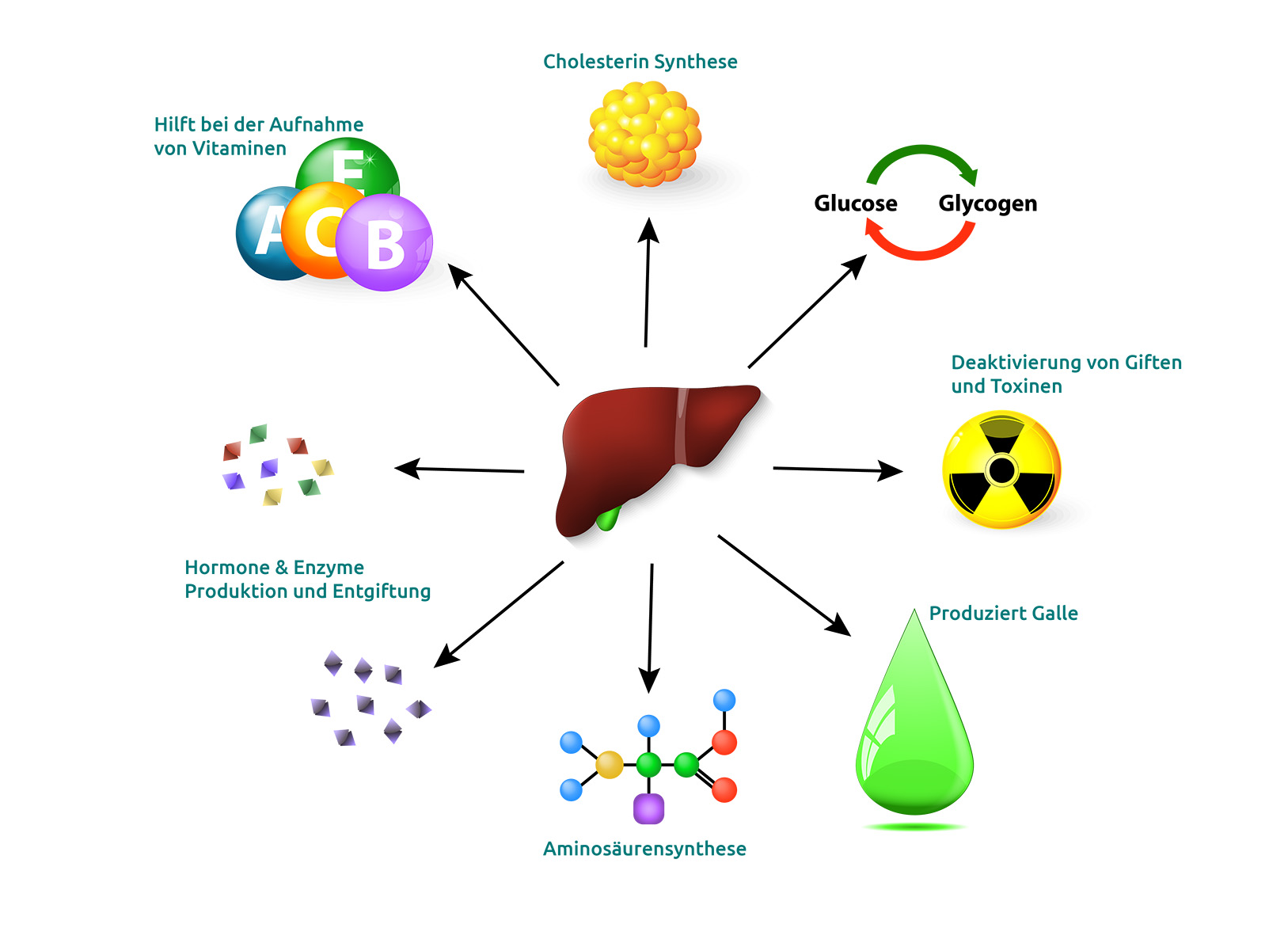

But this is not so easy. Xenobiotics are now an inevitable part of our everyday lives and cannot be completely avoided. These exogenous substances include not only medicines, but also environmental toxins, heavy metals, preservatives, flavor enhancers and pollutants. While water-soluble substances can be excreted directly via the urine, lipophilic foreign substances must first be metabolized in the liver (phase I metabolism) and then converted into a water-soluble form by conjugation (phase II) before they can be excreted via faeces or the kidneys.
The human body has a whole toolbox of enzymes at its disposal for these two steps. In phase I, toxic substances are oxidized, reduced and/or hydrolyzed by so-called cytochrome P450 enzymes. This usually produces radical intermediates that need to be further metabolized and Detoxified as quickly as possible. For this purpose, these are coupled to polar molecules such as glutathione, cysteine, taurine, glycine or glucuronate, thereby “deactivating” them and finally excreting them.
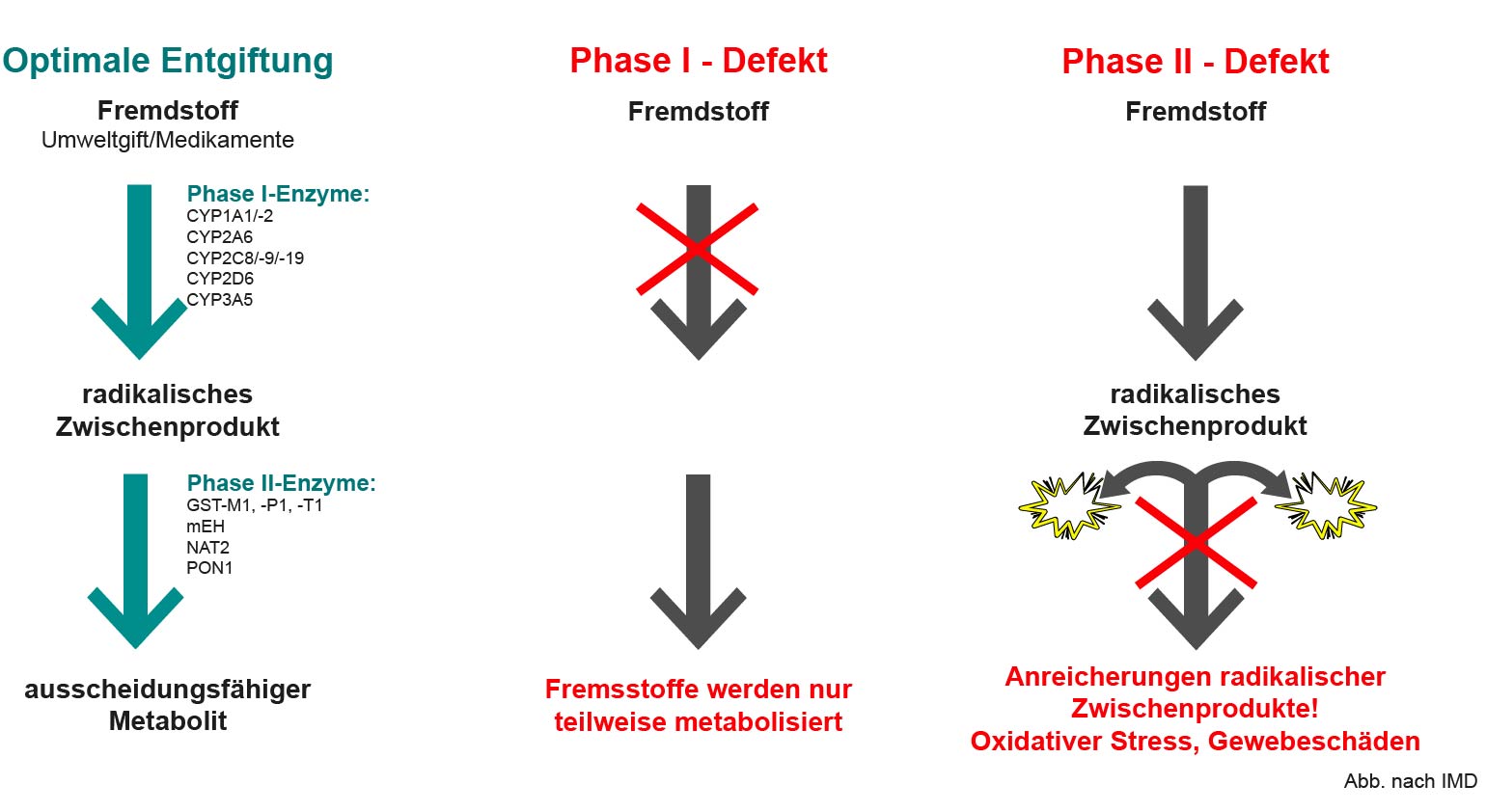
Alongside alpha-lipoic acid, the tripeptide glutathione is one of the most important antioxidants. Glutathione can release and reabsorb electrons and therefore acts as a highly effective redox system: the so-called glutathione peroxidase neutralizes hydrogen peroxide, organic peroxides and free radicals by splitting off water to form the corresponding alcohol. The selenocysteine from the active center of the enzyme reacts to form selenic acid and is then reduced again, consuming two molecules of glutathione. “Spent” oxidized glutathione can then be regenerated by glutathione reductase. A sufficient supply of Selenium is therefore required for the glutathione peroxidase to function optimally and maximum enzyme activity is only achieved from blood Selenium levels of around 100 ug/l. In Germany, average selenium levels are between 70 and 80 ug/l, as published in a human biomonitoring study by the Federal Environment Agency in 2002(Umweltbundesamt). Since nothing has changed in the selenium content of the soil since then, and therefore nothing has changed in the foods and selenium intake of the population, the selenium supply of the German population is probably still in the lower range.
If the load of toxins and xenobiotics exceeds the detoxification capacity of the liver, damage to the hepatocytes can occur – depending on the dose and intoxication. In addition to a sufficient supply of amino acids and antioxidants, nutrients and plant substances can also have a positive influence and a protective effect. The phospholipid choline is synthesized from the amino acid methionine and is the precursor of acetylcholine. In terms of Detoxification, choline has a so-called lipotropic function, i.e. it promotes the mobilization and transport of fat from the liver. It therefore counteracts fat accumulation in the liver. In addition, it promotes the liver’s detoxification capacity not only in the case of alcohol, but also in the case of heavy metal and environmental pollution and the intake of medication.
Probably the best-known medicinal plant for the liver is milk thistle (=Silybum marianum). Silymarin has now been well studied as an active ingredient and is a mixture of the isomers silibin, silicristin and silidianin. Its main effect is to protect liver cells by stabilizing the cell membrane of hepatocytes and thus preventing toxins and noxious substances from entering the cell interior. It also acts as a radical scavenger and thus prevents damage. The silymarin it contains also activates polymerase A, which increases protein synthesis and has a positive effect on liver cell proliferation. Milk thistle therefore also supports cell regeneration.
When it comes to liver health, artichokes are also on everyone’s lips. Its leaves were already used by the Egyptians. The cynarin it contains, a caffeic acid derivative, protects the cell membrane of hepatocytes from toxins. The artichoke also contains flavonoids such as luteolin, canyroside and bitter substances (canyropicrin). Luteolin, for example, has an antioxidant effect and inhibits interleukin 6, i.e. has an anti-inflammatory effect. The ingredients also have a positive effect on lipid metabolism, stimulate gastric acid production and are used to support dyspeptic complaints.
In summary, the ingredients of artichoke leaves and milk thistle are effective:
- Protective
- regenerative
- as a radical scavenger
and thus ideally support the liver day after day in dealing with the stresses of everyday life.
Source:
200 Genetics of Detoxification (imd-berlin.de)
Dorstewitz H. Phytotherapy for diseases of the liver and gallbladder. EHK 2015; 64: 212-217
Uwe Gröber: Mikronährstoffe, 3rd edition, Wissenschaftliche Verlagsgesellschaft Stuttgart
Nathalie Schmidt, Edmund Schmidt: Mikronährstofftherapie, 1st edition, Elsevier-Verlag

